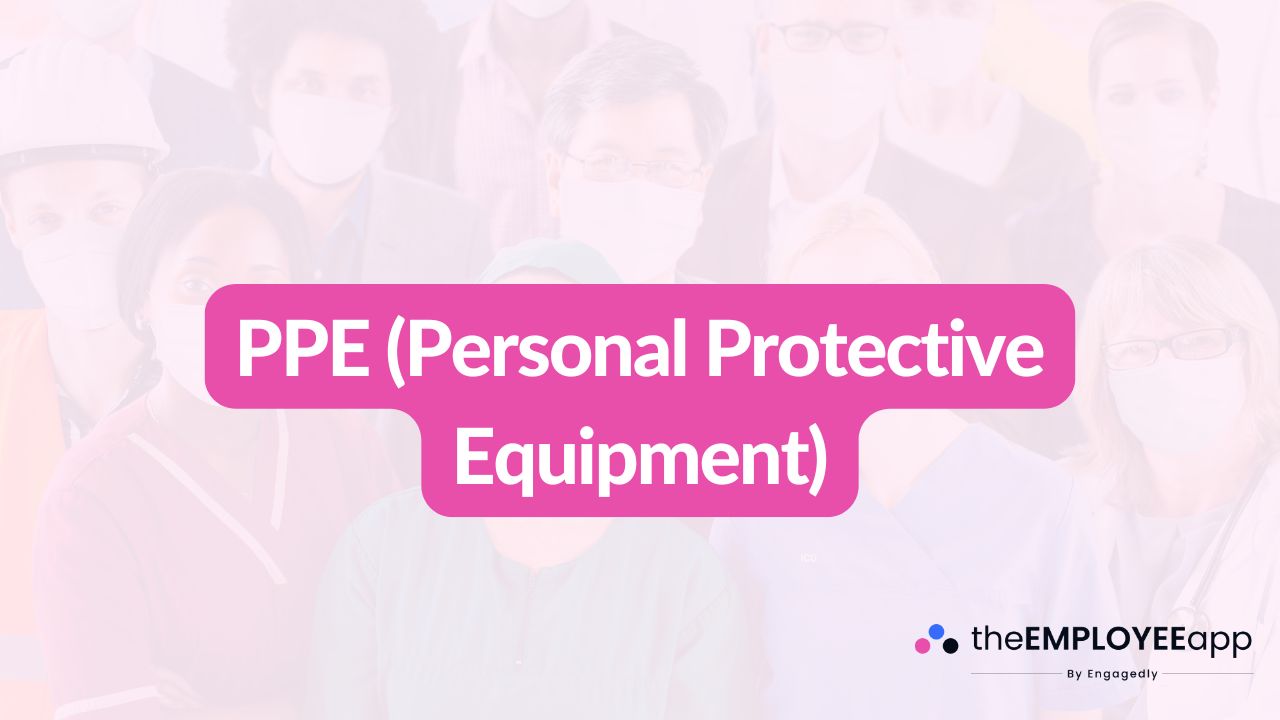
PPE, or personal protective equipment, refers to the specialized clothing, gear, and equipment employees use to protect themselves from hazards in the workplace. PPE is designed to reduce the risk of injuries and illnesses caused by exposure to dangerous environments, materials, or equipment. It is an essential part of workplace safety programs across industries, ensuring employees can perform their jobs without unnecessary risk.
Examples of PPE include helmets, gloves, face shields, protective eyewear, safety footwear, masks, and high-visibility clothing. The type of PPE required depends on the nature of the job and the specific hazards present in the work environment.
Workplace safety is a top priority for every organization. While many hazards can be reduced through training, policies, and engineering controls, there are situations where exposure to risk is unavoidable. In those cases, PPE acts as the last line of defense.
The importance of PPE goes beyond regulatory compliance—it directly impacts employee well-being, productivity, and trust in the organization. Workers who feel safe are more engaged and confident in carrying out their tasks. Conversely, inadequate protection can lead to injuries, downtime, and increased costs for the business.
The category of PPE is broad and covers different forms of protection depending on the hazard. Some of the most common types include:
Head Protection: Hard hats and helmets to protect against falling objects or impact.
Eye and Face Protection: Goggles, face shields, and safety glasses to protect against flying particles, chemicals, or sparks.
Hearing Protection: Earplugs and earmuffs to reduce noise exposure in loud environments.
Respiratory Protection: Masks and respirators to protect against dust, fumes, or airborne contaminants.
Hand Protection: Gloves designed for specific hazards such as chemicals, heat, or sharp objects.
Foot Protection: Safety boots or shoes that guard against impact, punctures, or electrical hazards.
Body Protection: High-visibility vests, flame-resistant clothing, or protective suits depending on workplace risks.
Each type of PPE is carefully designed to address a particular category of hazard, and proper selection is critical to ensuring safety.
Having PPE available is not enough—organizations must implement best practices to ensure it is used correctly and consistently. Some important steps include:
Conducting Risk Assessments: Identify potential hazards in the workplace and match them with the right type of PPE.
Providing Proper Training: Employees must understand how to use, wear, and maintain their PPE correctly.
Ensuring Proper Fit: Ill-fitting PPE can reduce effectiveness and discourage use.
Regular Inspections: Equipment should be checked frequently for wear and tear to ensure it remains protective.
Clear Policies: Organizations should establish rules around when and how PPE must be worn.
The use of PPE benefits both employers and employees in several ways.
For Employers:
Reduces workplace accidents and associated costs.
Improves compliance with safety regulations.
Enhances productivity by minimizing downtime caused by injuries.
Builds a stronger culture of safety and trust.
For Employees:
Provides protection from serious injuries or long-term health risks.
Increases confidence in their ability to perform tasks safely.
Contributes to overall well-being and job satisfaction.
Despite its importance, PPE is not always used properly in the workplace. Employees may find it uncomfortable, inconvenient, or unnecessary if they underestimate risks. Additionally, organizations sometimes struggle with costs or logistical issues related to providing PPE for every employee. Overcoming these challenges requires consistent education, leadership commitment, and a focus on integrating PPE into the daily routine of the workforce.
PPE, or personal protective equipment, is one of the most critical aspects of workplace safety. By equipping employees with the right gear, organizations not only meet compliance standards but also demonstrate a commitment to protecting their workforce. When combined with proper training and safety policies, PPE plays a vital role in creating a safe, healthy, and productive workplace environment.
